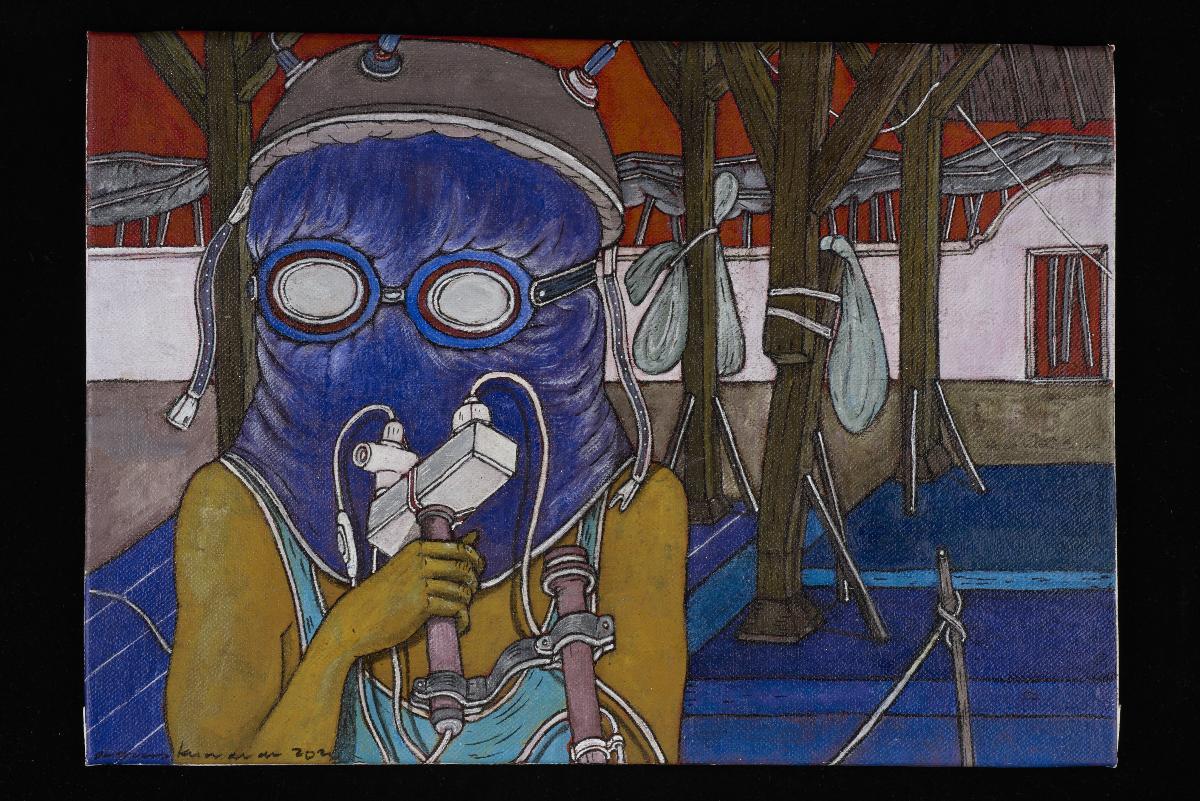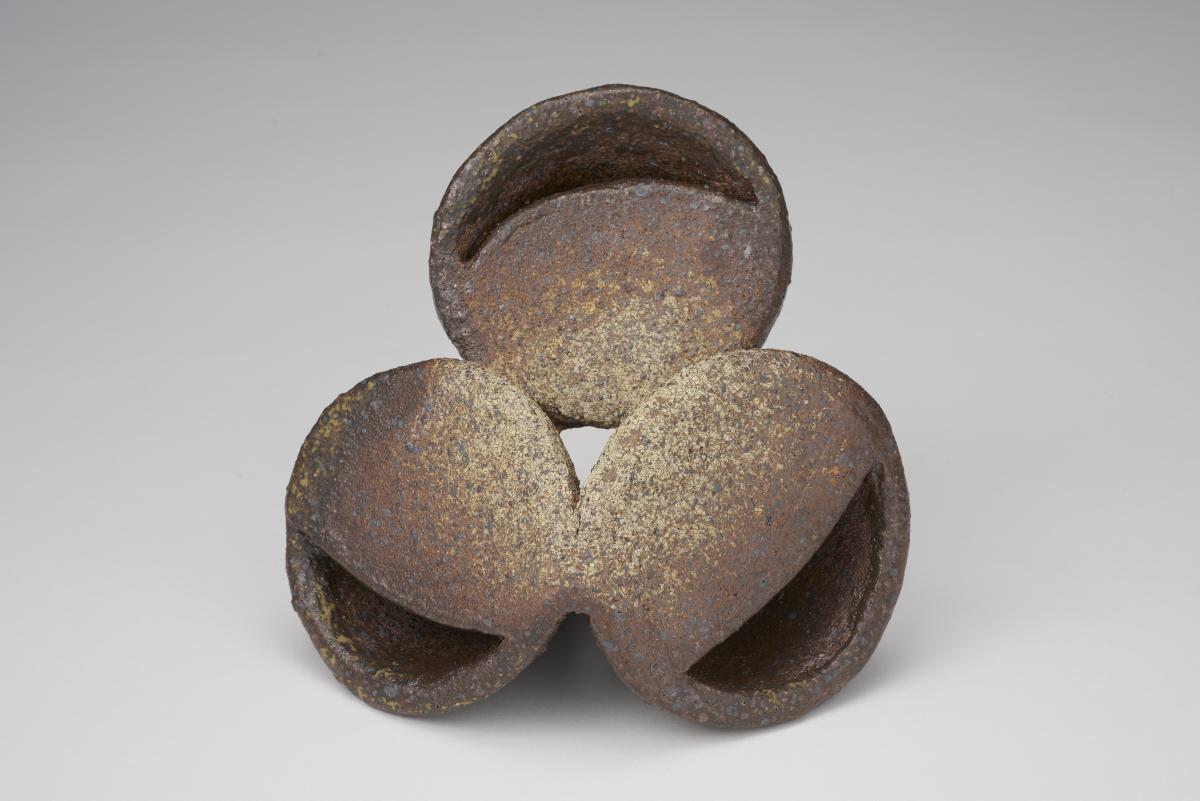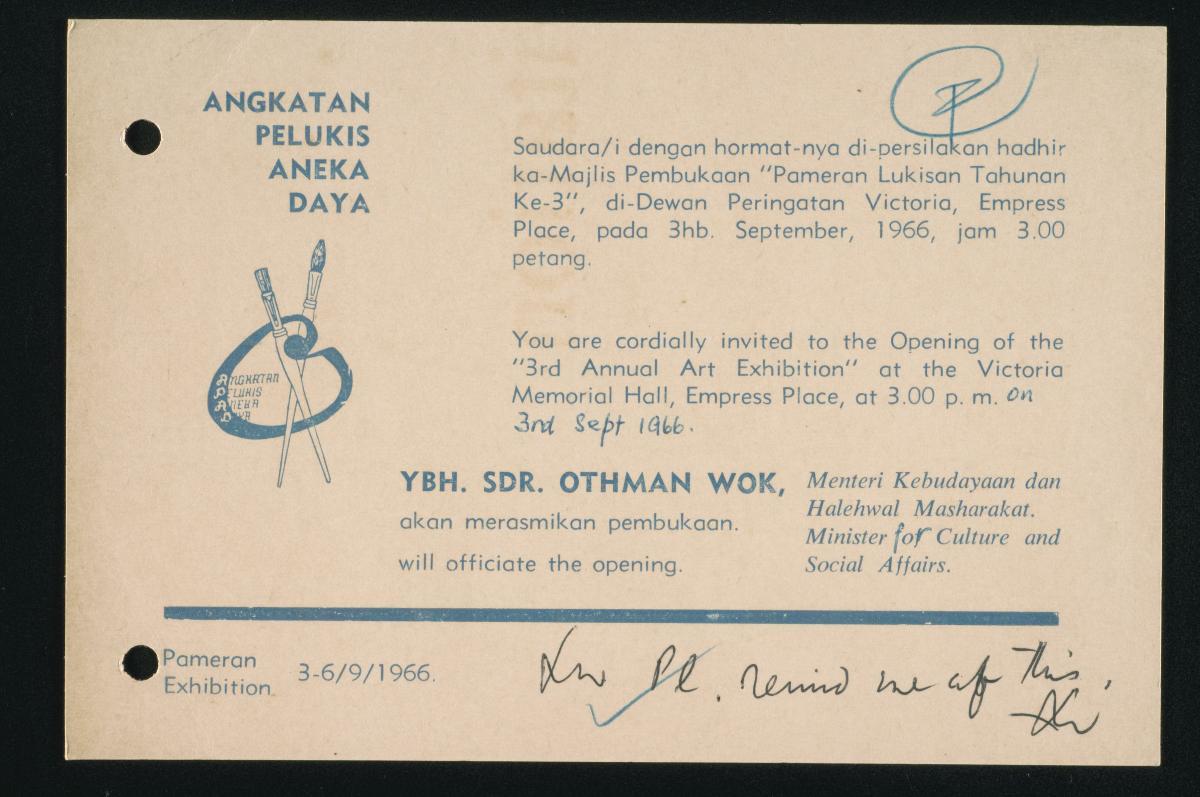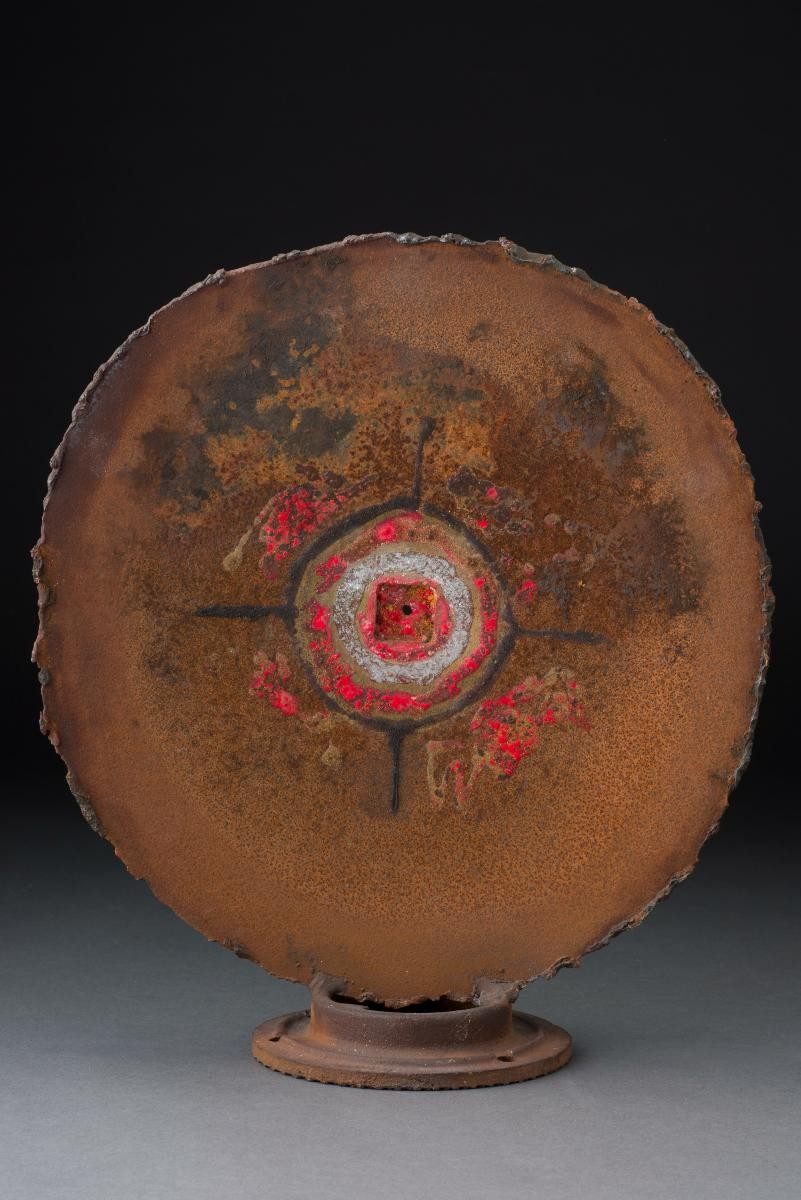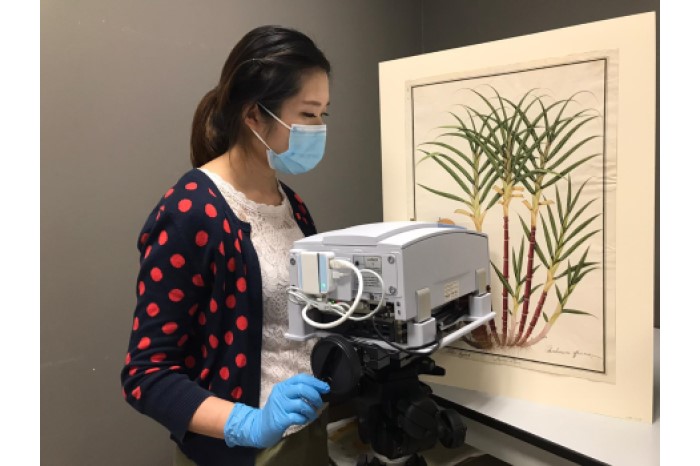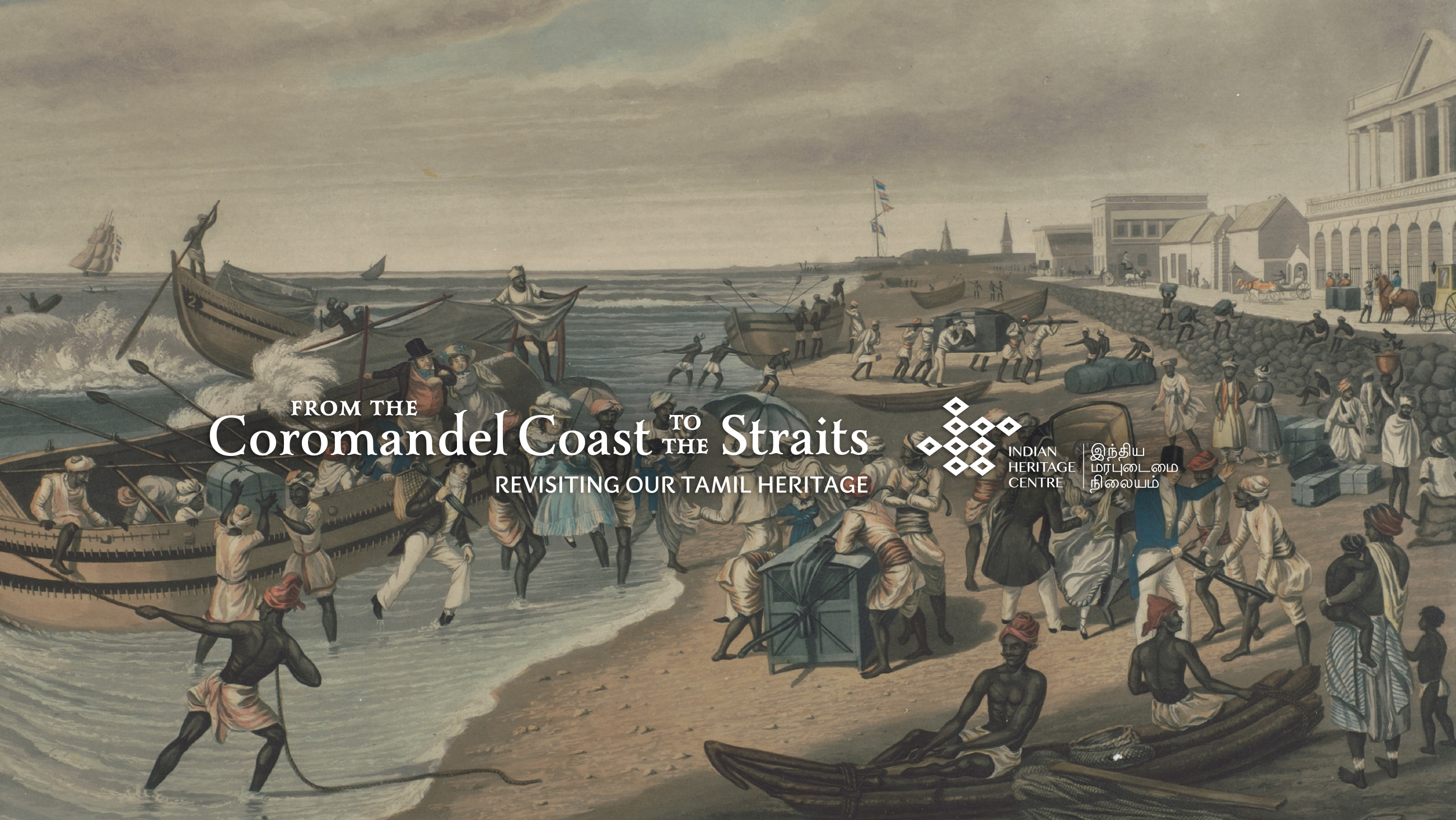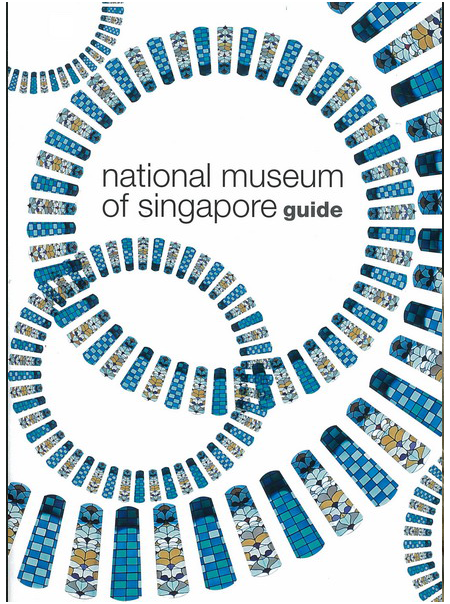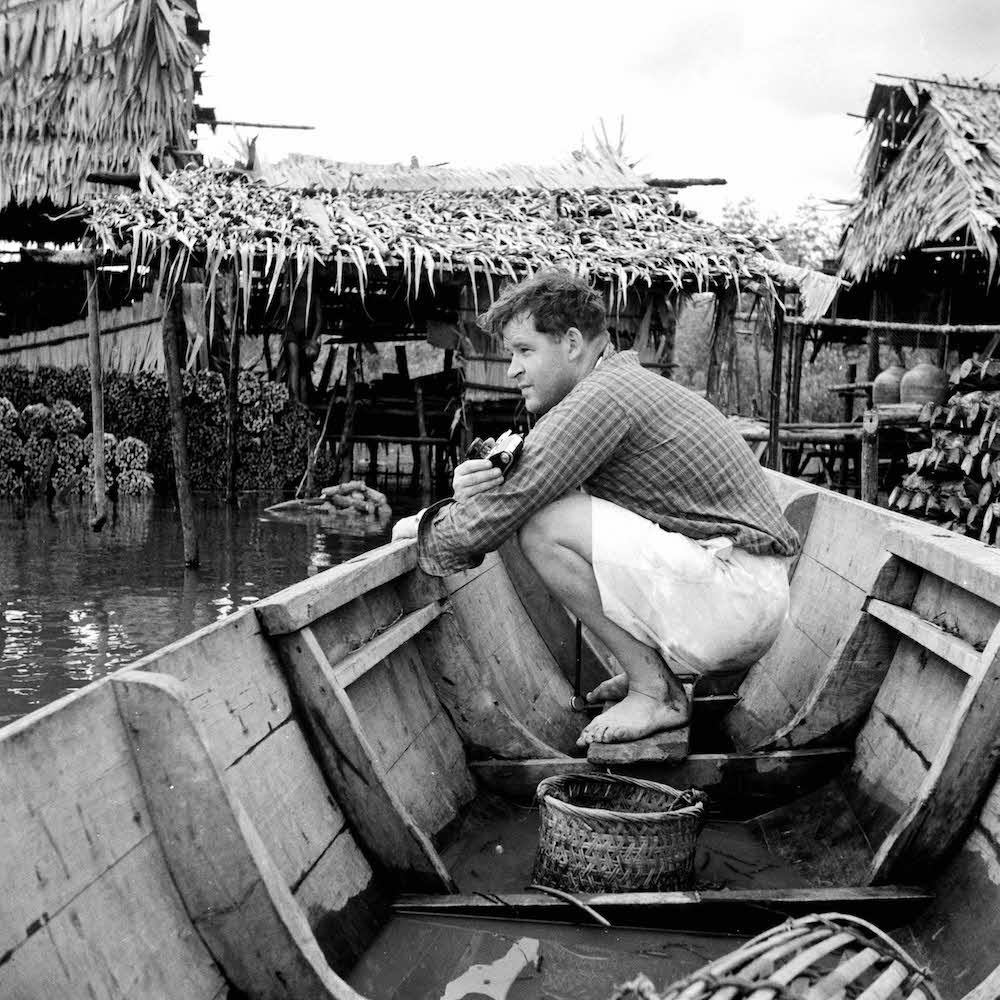The God of Small Things, which draws its title referencing the eponymous book by Arundhati Roy with the same name, is a presentation of paintings that Kurniawan has been working on throughout the past couple of years. Although Kurniawan often works on a much larger scale in his works, he found in exploring these new paintings a more intimate, simple attitude of contemplation and expression. The paintings contain many different colours and seem illustrative or even comic-like at first glance, which belies the complexities of what Kurniawan is sharing through his works. The paintings begin as drawings on paper that act as studies, of sorts, for Kurniawan to begin developing the compositional framework for his other works. Kurniawan is a storyteller, using the medium of painting to communicate things that may not be so easily expressed in other ways. Like manuscripts of his mind, each painting acts like a vignette or the representation of a certain scene within a larger narrative, and they are meant to be understood in this way, that a multifaceted story begins to emerge when considering the works not only in isolation from each other but rather in relationship to each other. Moving from one scene, or stage, to the other, there seems to be a sense of detachment, but simultaneously a building up towards a discrete premonition regarding the bigger picture of what Kurniawan is sharing through the presentation as a whole. The symbolism in Kurniawan’s paintings is enigmatic in nature and is not meant to be tied down to a singular form of understanding or meaning. But Kurniawan leaves clues and suggestions for the viewer to speculate and imagine their own readings. Each of the paintings in The God of Small Things is framed inside or within the vicinity of private dwellings, and the characters he builds in his works seem to be conducting themselves within the assumption that they are not being observed. Kurniawan generates stark tension between these private spaces with intrusions of broadcasting devices, electric cables, and radios. Many of the characters are wearing face coverings, masks, or helmets and therefore seem to be protecting themselves from an invisible threat that may appear at any moment, even at home.




